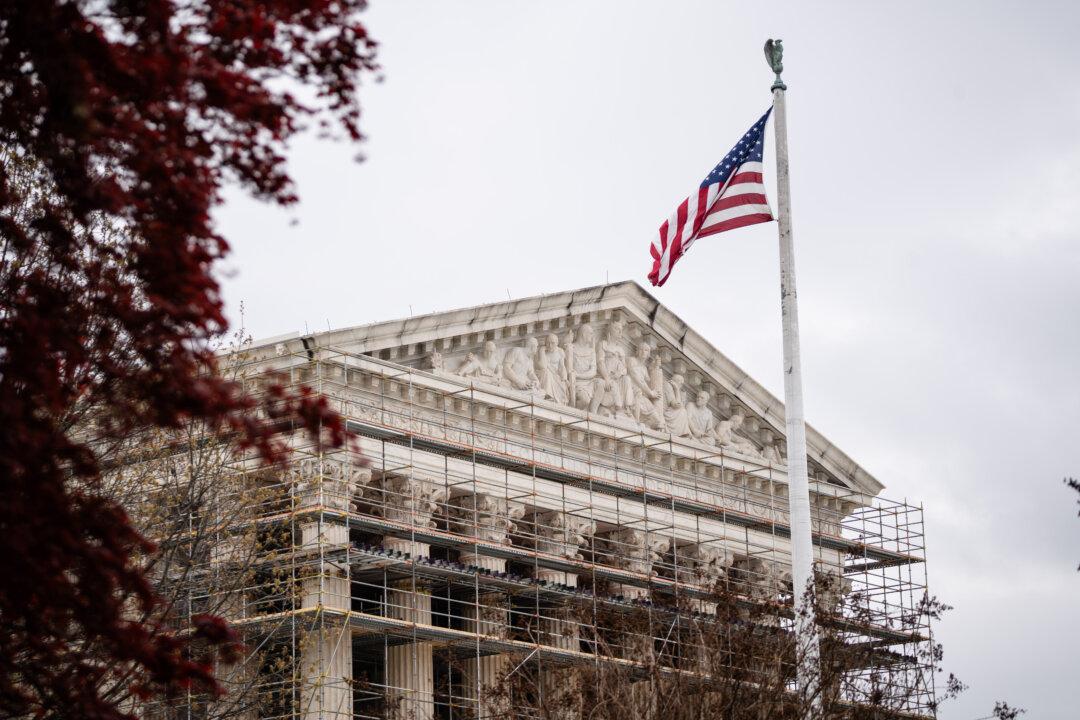The Supreme Court denied on Sept. 3 Oklahoma’s emergency application to restore a canceled $4.5 million family planning grant.
The three justices did not explain why they would have granted the state’s request.
HHS argued Oklahoma should lose the funding because the state won’t include abortion in its information offerings about family planning services.
Oklahoma law forbids it from making abortion referrals. Abortion is banned in Oklahoma except to save the life of the mother.
But HHS says states must provide abortion information to qualify for grants under Title X of the Public Health Service Act of 1970.
A 2021 HHS regulation says those receiving funding must “offer pregnant clients the opportunity” to receive “neutral, factual information” regarding family planning options, including abortion.
Oklahoma allocates Title X funds to city and county health departments, which use it to promote family planning, including infertility services.
On July 15, the U.S. Court of Appeals for the 10th Circuit affirmed a federal district court’s March 26 denial of Oklahoma’s request for a preliminary injunction against HHS. The case is still before the lower court.
The Supreme Court’s new ruling came after a federal appeals court upheld the decision of HHS to deny a $7 million family planning grant to Tennessee, which also refused to provide abortion information to program participants. On Aug. 26, the U.S. Court of Appeals for the Sixth Circuit affirmed that funding denial.
In an Aug. 27 filing with the Supreme Court, HHS referenced the Sixth Circuit decision.
The circuit court ruled 2–1 that Tennessee would probably not succeed at trial with its argument that the abortion information requirement violates the U.S. Constitution’s spending clause. The state argued that such a mandate is valid only if imposed by Congress. The case remains pending in federal district court.
The Sixth Circuit also rejected Tennessee’s argument that the abortion information mandate violated Title X, which forbids the use of grant money “in programs where abortion is a method of family planning.”
The circuit court’s ruling “further confirms” the Supreme Court should deny Oklahoma’s request because it is consistent with the 10th Circuit’s “correct” decision in the Oklahoma case and “does not conflict with any decision of this Court or another court of appeals,” the HHS brief stated.
On Aug. 28, Oklahoma responded, saying its funding restoration application should still be considered because the Sixth Circuit’s ruling did not weigh in on the so-called Weldon Amendment of 2004.
That legislative provision bars HHS from funding any program that “subjects any institutional or individual health care entity to discrimination on the basis that the health care entity does not provide, pay for, provide coverage of, or refer for abortions.”
That issue was not before the Sixth Circuit, but Oklahoma said it was relevant to its application.
“And it remains the simplest and most straightforward route for an injunction or a stay, given that a ruling in Oklahoma’s favor would do nothing to undermine or upset the 2021 Rule,” the brief states.
Moreover, the brief stated that the “truncated” discussion of the spending clause in the Sixth and 10th Circuits’ rulings did not adequately examine an 11th Circuit ruling from 2021 that held that “allowing an executive agency to impose a condition that is not otherwise ascertainable in the law Congress enacted ‘would be inconsistent with the Constitution’s meticulous separation of powers.’”
A spokesman for Oklahoma Attorney General Gentner Drummond said the case isn’t over yet.
“While the denial is obviously disappointing, Attorney General Drummond is pleased that three Supreme Court justices were willing to step in and stop the Biden Administration’s lawless overreach at this preliminary juncture,” Drummond’s communications director, Phil Bacharach, told The Epoch Times.
“We will be exploring our options moving forward,” he said.
The Epoch Times asked the U.S. Department of Justice, which is representing HHS, for comment, but no reply was received by publication time.







